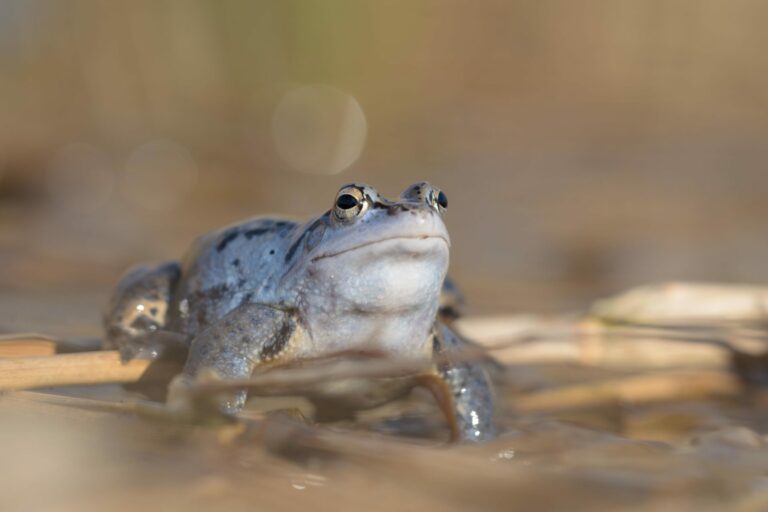Rana arvalis

The moor frog reaches a size of up to 7 cm and is characterized by its pointed snout and the blue coloration of males during mating season (Schaefer 2018). Otherwise, the upper side of Rana arvalis is brownish in color and often marked with dark spots. The ventral side is light and does not have any spots. Preferred habitats of the moor frog include open forests, heathlands, peat bogs, and moist grasslands. Various types of water bodies are visited for breeding. The mating season begins in March, and each female can lay up to 2000 eggs. Predators of this frog species include various bird and mammal species, as well as grass snakes and adders. Threats to the species include habitat loss due to drainage, pesticide use, road mortality during migration to breeding sites, and predation by raccoons during the mating season (Glandt 2018).
Diet: Rana arvalis feeds on insects and their larvae, as well as earthworms, snails, and spiders (Glandt 2018).
Threat status: The moor frog is listed as “least concern” on the IUCN Red List for Europe, but it is classified as “vulnerable” in Germany. Rana arvalis is considered “protected” throughout Europe under the FFH Directive (Annex IV) and “strictly protected” under the Federal Nature Conservation Act in Germany.
-
Glandt, D (2018)Praxisleitfaden Amphibien- und Reptilienschutz. Schnell – präzise – hilfreich. Berlin, Heidelberg: Springer Berlin Heidelberg.
-
Schaefer, M (2018)Brohmer – Fauna von Deutschland. Ein Bestimmungsbuch unserer heimischen Tierwelt: Quelle & Meyer Verlag GmbH & Co